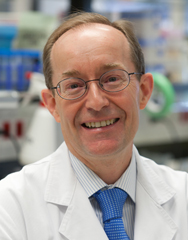Luis Montuenga Badia, Dean of the School of Sciences of the University of Navarra
When COVID-19 ends, cancer will still be there

The pandemic caused by COVID-19 is teaching us many lessons. One of them is the ability of the scientific research to react quickly and seek answers to specific problems, such as generating an effective vaccine against the virus. What is happening in the world of research these months is unprecedented.
In April of this year, a few weeks after the declaration of the pandemic by the World Health Organization, there were already 115 projects with promising candidates to become the coveted vaccine.
Last week, the journal Nature reported that in the first week of September the international research community already had 321 vaccine candidates (2.5 times more than in April).
Of these, 33 projects are already in clinical trials, i.e. they are being tested on humans and have therefore passed strict scientific and administrative filters.
It is, without a doubt, a titanic effort in record time, supported by an avalanche of public and private funding on a scale never before seen by the biomedical research .
Feverish activity in laboratories
The core topic of this phenomenon has been the joint involvement of institutions, pharmaceutical and biotechnology companies, as well as sponsorship organizations to financially support this effort.
At final, we are witnessing a combination, never seen before, of feverish activity in laboratories, partnership of society in clinical trials and huge support for work researcher by public and private institutions. Another positive effect of this tragedy has been that society has better understood the meaning and mission statement of researcher in the area of health and our task, normally quiet and hidden, has gained visibility and recognition.
This is good news, certainly in the midst of a tragic status for public health.
research beyond COVID-19
In these lines, however, I do not wish to focus on COVID-19 but, bearing in mind that we are "in the times of COVID", I would like to refer to another disease of enormous incidence and mortality worldwide: cancer.
Cancer was there before COVID-19, it lives with the pandemic and will remain when we are rid of it. This week we have commemorated the International Day of the research in cancer. It is the day on which the efforts of hundreds of thousands of researchers who are dedicated to fighting this other "pandemic" that is cancer are most especially remembered.
Although survival rates have progressively improved in recent decades, cancer is still responsible for the deaths of eight million people each year, including 1.2 million in Europe. manager . In the Region of the Americas, cancer is the second leading cause of death. It is estimated that in 2018, in this Region, 1.4 million people died from this disease, 47% were under 69 years of age. These are huge annual mortality figures that require a much more intense effort in our fight against this pathology.
The European Union, in its new multiannual plan for research and innovation (2021-2027), has identified six priority "missions", one of which is precisely the fight against cancer. The general goal of the "mission statement against cancer" will be "to save 3 million lives between now and 2030". It is ambitious, but not impossible, if the research is adequately supported.
Among other issues, the European Union intends to intensify research to better understand cancer and its genetic origin, to develop new screening and early detection programs, and to advance personalized medicine.
These are attractive objectives, on which many Spanish researchers have been working for some time. But, unfortunately, in our country, in contrast to many other European countries, it seems that we do not fully understand the future importance of research.
For sample, a button. Germany invests 3% of its GDP in research , while the Spanish figures are around 1.2%. The scientific research is still not a priority sector in the Spanish Economics . This lack of priority attention causes a good issue of researchers to suffer from a lack of means to carry out their scientific objectives, job instability, paralyzing bureaucratization, lack of access to major technologies, etc...
The necessary generational change in laboratories
The problem of generational turnover is even more serious. The age average of the group leaders of research in Spain is 55 years. The groups of research are aging; and the capacity to stabilize brilliant young researchers in our country is still very limited, despite the occasional efforts of public and private entities to facilitate the recruitment of young researchers, trained for years in cutting-edge centers abroad.
And behind the young people who should already be stabilized, our universities are training many more scientists, excellently prepared, who will guarantee the generational relay in the Spanish research for many years to come. The wickerwork is there, but we need to ensure that we can build a good basket.
We need to invest generously in the new generations of scientists, we need incentives and the capacity to generate motivation in young people, so that they do not end up migrating to other parts of the world where the "environmental" conditions for researcher are much more favorable.
But there are signs of hope, at least on the part of civil society. A paradigmatic example is that of the association Española contra el Cáncer (AECC) which, among other important objectives, is determined to obtain at least part of the resources that cancer researchers need to move forward with our work.
Cancer researchers are undoubtedly grateful to the efforts of citizens and institutions. But we need much more financial aid to be able to dedicate ourselves body and soul to our priority mission statement : to search for and find new strategies to detect the presence of cancer earlier and more accurately, and to treat it in the most personalized and effective way possible.
This article was originally published in The Conversation. Read the original.
